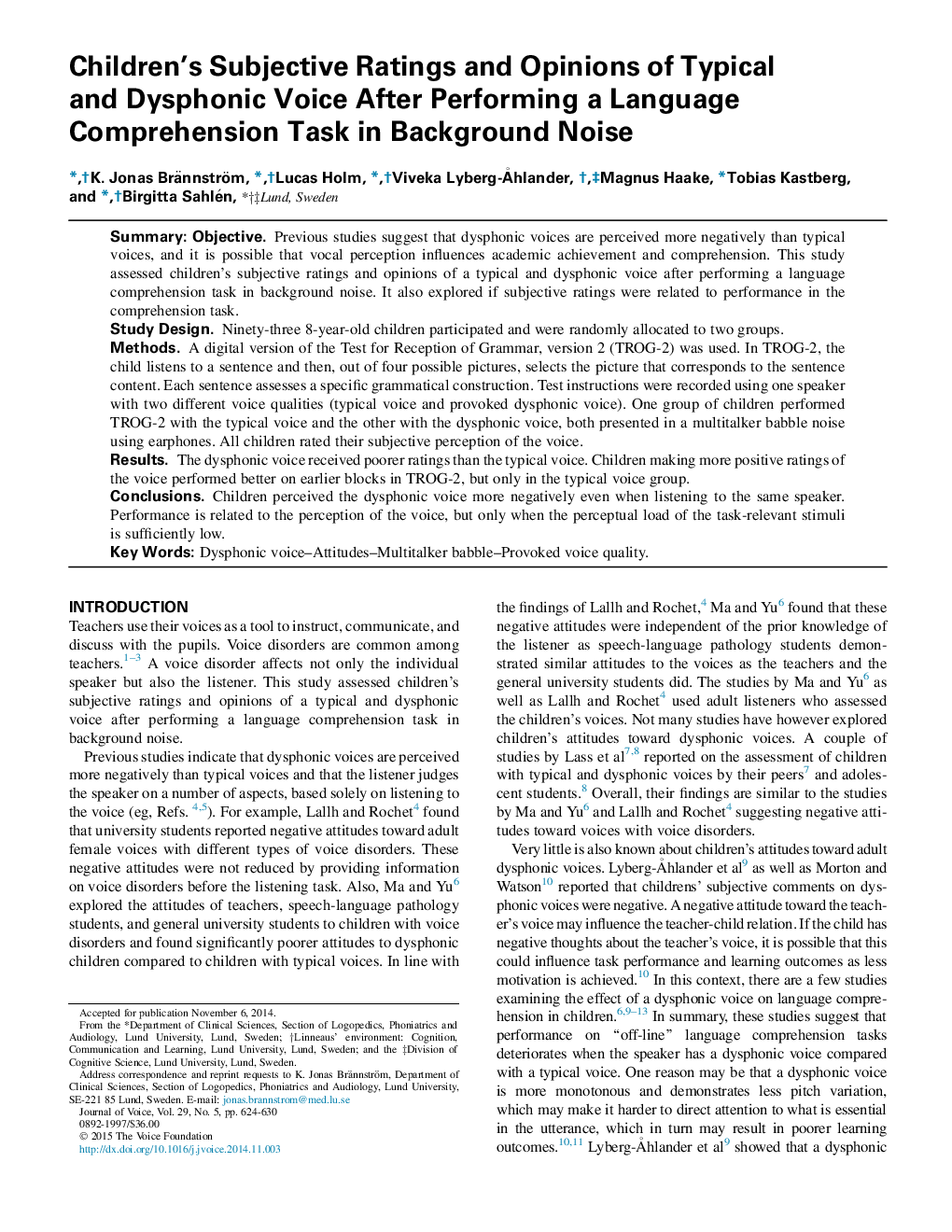| Article ID | Journal | Published Year | Pages | File Type |
|---|---|---|---|---|
| 1101383 | Journal of Voice | 2015 | 7 Pages |
SummaryObjectivePrevious studies suggest that dysphonic voices are perceived more negatively than typical voices, and it is possible that vocal perception influences academic achievement and comprehension. This study assessed children's subjective ratings and opinions of a typical and dysphonic voice after performing a language comprehension task in background noise. It also explored if subjective ratings were related to performance in the comprehension task.Study DesignNinety-three 8-year-old children participated and were randomly allocated to two groups.MethodsA digital version of the Test for Reception of Grammar, version 2 (TROG-2) was used. In TROG-2, the child listens to a sentence and then, out of four possible pictures, selects the picture that corresponds to the sentence content. Each sentence assesses a specific grammatical construction. Test instructions were recorded using one speaker with two different voice qualities (typical voice and provoked dysphonic voice). One group of children performed TROG-2 with the typical voice and the other with the dysphonic voice, both presented in a multitalker babble noise using earphones. All children rated their subjective perception of the voice.ResultsThe dysphonic voice received poorer ratings than the typical voice. Children making more positive ratings of the voice performed better on earlier blocks in TROG-2, but only in the typical voice group.ConclusionsChildren perceived the dysphonic voice more negatively even when listening to the same speaker. Performance is related to the perception of the voice, but only when the perceptual load of the task-relevant stimuli is sufficiently low.
